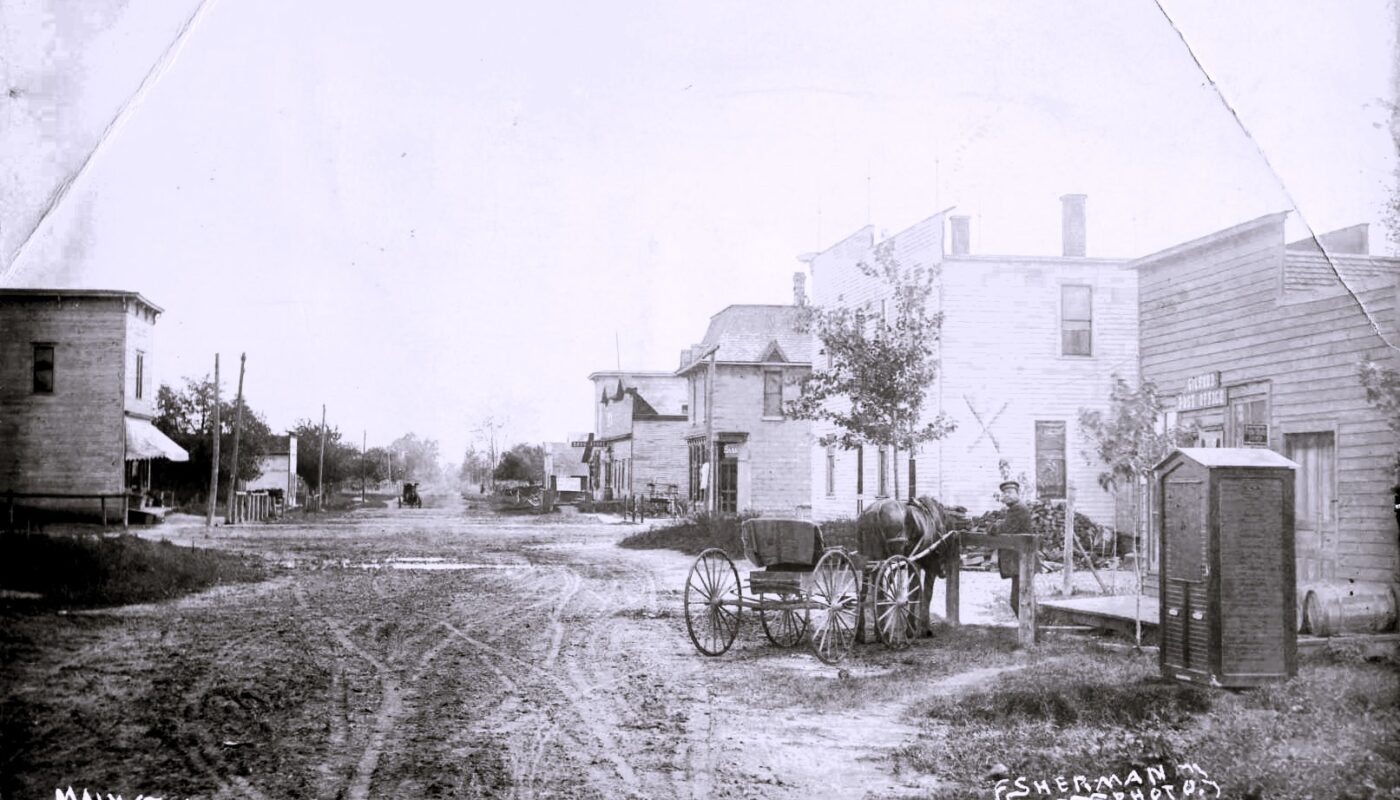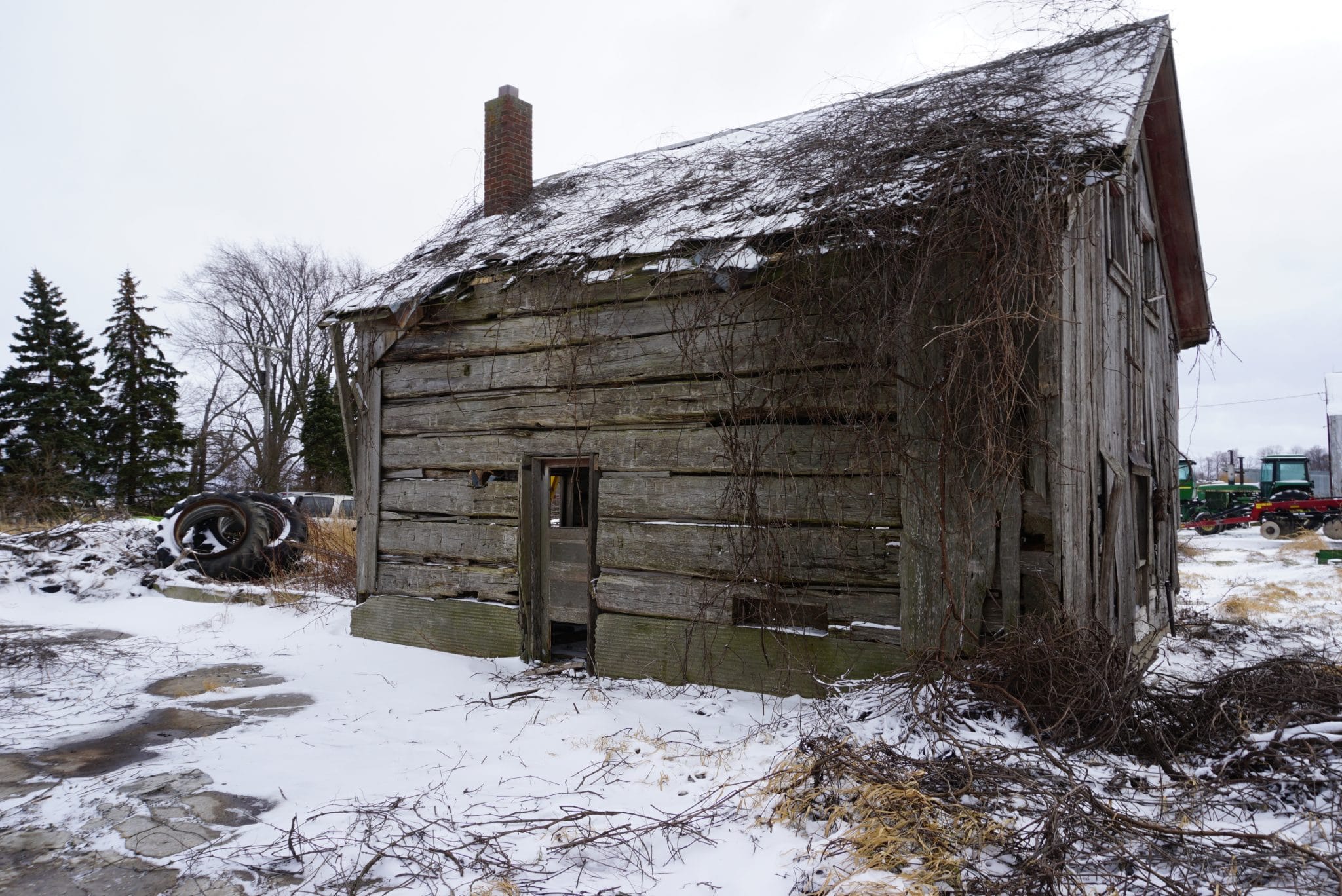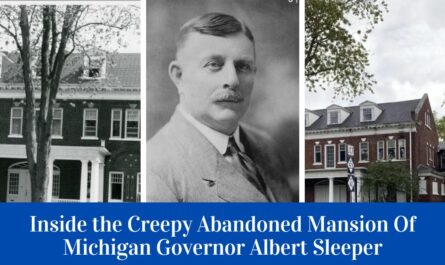Gilford, Michigan, is a small community with a big story to tell. Tucked into the farm country of Tuscola County, this unincorporated village has witnessed dramatic changes over the past 150 years. In this article, we’ll explore the history of Gilford Michigan, from its 19th-century founding through the railroad boom of the early 1900s, and into the mid-20th century. Early photographs (1900s–1950s) help bring Gilford’s past to life, showing how this quiet town grew and adapted over time. Let’s journey back and see what makes the history of Gilford, Michigan, so unique and inspiring.
Table of Contents – History of Gilford Michigan
Video – When a Dirt Road Was Main Street – Gilford, Michigan in Photos
Early Settlement and Founding (1800s)

Like many Michigan towns, Gilford began with dense forests, untamed marshland, and a handful of determined pioneers. The area was organized as Gilford Township in January 1858. It was named for the Gilford family – one of the early settler families in the region. In those days, travel was difficult and neighbors were few. Early homesteaders had to clear thick timber to create farm fields.
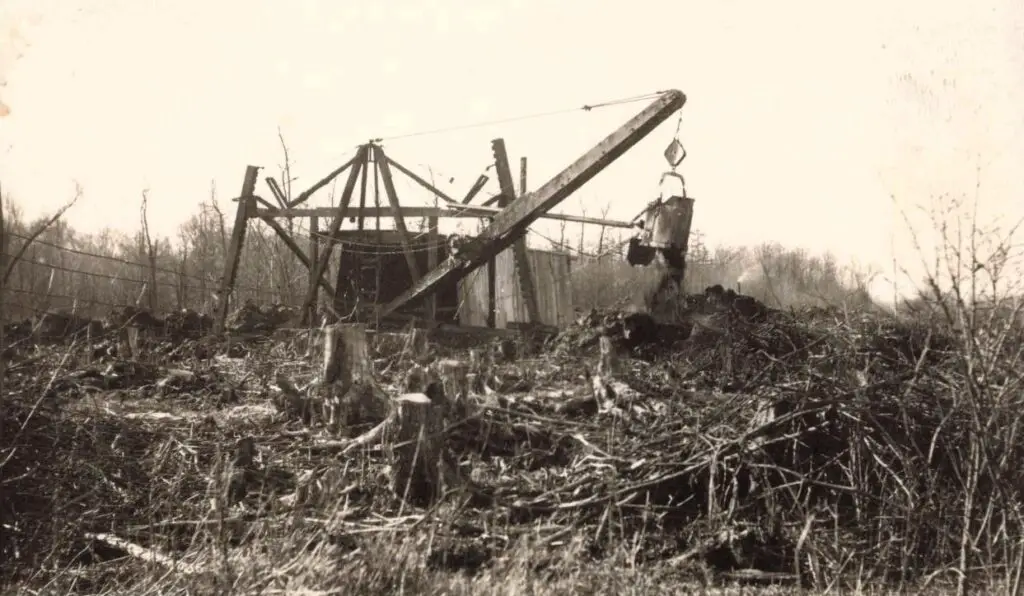
They also dug drainage ditches to dry out the swampy soil. (One major project, the Garner Drain, would later help reclaim a lot of farmland around Gilford.) By the late 1860s, enough people lived in the vicinity to warrant a post office, which first opened in 1869. Though the post office briefly closed (1875–1878) – possibly due to economic hard times or a devastating forest fire in the region – it reopened and became a fixture of the community.

The history of Gilford, Michigan, in these pioneer years is one of grit and perseverance. Settlers dealt with isolation, harsh winters, and even the Thumb Fire of 1881, which swept through parts of Tuscola County and challenged residents to rebuild. Despite hardships, the township slowly grew. By 1887, the residents’ focus on community was clear: they organized camp meetings and founded a church, signalling that this once-wild area had become a true hometown.
The Railroad and a Prospering Farm Town (1900–1920)

The early 20th century brought exciting progress to Gilford. Michigan’s Thumb region was transforming from lumber frontier to agricultural heartland, and Gilford was no exception. In 1901, the Pere Marquette Railway extended a line through the area, putting Gilford on the map as a stop on a regional rail route. The town’s new train depot was a simple wooden building with a broad overhanging roof – a classic small-town station. It quickly became a hub of activity.
Farmers brought wagonloads of crops and dairy products to ship out by rail, and local families met the train to pick up supplies, mail, and even the occasional visitor. An early 1900s real photo postcard shows the Gilford depot around 1910, with a station agent and a local farmer posing out front. In the image, you can spot details of daily life: a metal milk can waiting on the platform and a bicycle parked nearby, hinting at how vital the railroad was to rural life. The depot even housed a Western Union telegraph office, which meant Gilford residents could send and receive messages across long distances in minutes, a marvel of connectivity in that era.
Farming & Business in Gilford Township
At the same time, farming was thriving. By the 1910s, most of the surrounding land had been logged off and converted to fields. Wheat, oats, corn, and navy beans (a popular crop in the Thumb) swayed in the summer breeze. Farmers in Gilford also participated in the regional sugar beet boom – growing sugar beets that would be sent to nearby factories for processing. To support agriculture, the community invested in infrastructure.
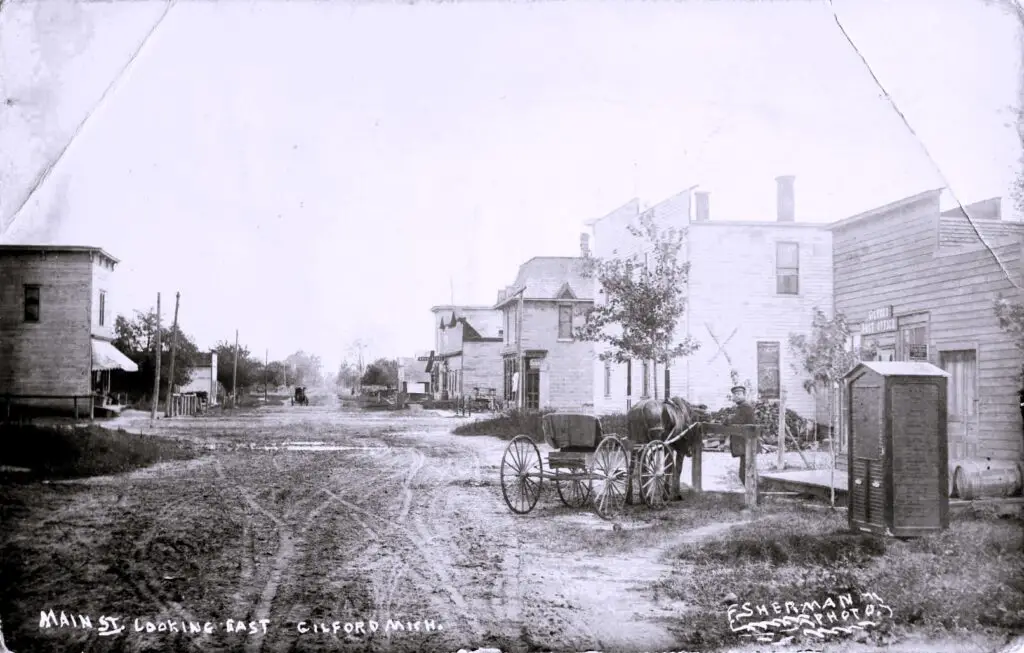
The Garner Drain (mentioned earlier) was one such effort that helped prevent flooding on crops. Photographs from 1911 and 1912 show that Gilford Township was a “growing, prospering community” by the early 1900s. Indeed, Main Street in Gilford circa 1911 appears surprisingly busy for a country village. In one photo, Main Street is unpaved but bustling: you can see horse-drawn buggies and people going about their day, with storefronts and utility poles lining the street.
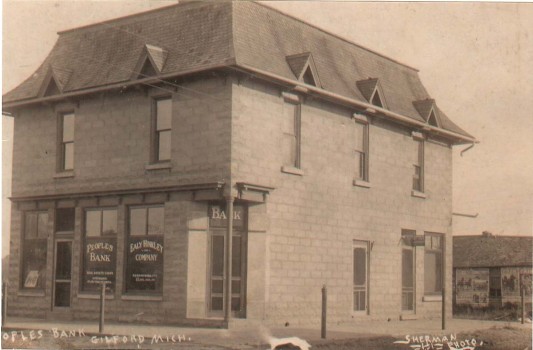
Gilford’s Main Street had a People’s Bank, at least two general stores, a hardware store, and other small businesses typical of the time. There was even a hotel in or near town for travelers (since rail lines often brought salesmen or visitors who needed lodging). While Gilford was never large, it had become a lively center for the surrounding farm community.
Community Institutions: Church, and Social Life

One remarkable aspect of the history of Gilford Michigan is the strength of its community institutions. Religion and education played central roles from early on. In 1889, residents built the Gilford United Brethren Church (today the United Methodist Church) on land donated by a local family. The church was literally a homemade project: farmers donated timber, a local sawmill cut the lumber, and everyone pitched in labor or materials to put up the building. It was a simple country church, without elaborate decoration, but it quickly became the town’s spiritual and social heart.
Every Sunday, farm families filled the pews – men on one side, women on the other in the very early years. – and listened to sermons that lifted their hopes. The church hosted holiday gatherings, ice cream socials, and even “pie socials” where homemade pies were auctioned to raise funds for good causes. In an era before television (or even radio), these events were big entertainment and brought folks together. As one local historical account notes, “camp meetings led by Reverend David Arnold in 1887 resulted in establishing the church”, illustrating how faith spurred community action in Gilford’s formative years.
Education & Schools in Gilford
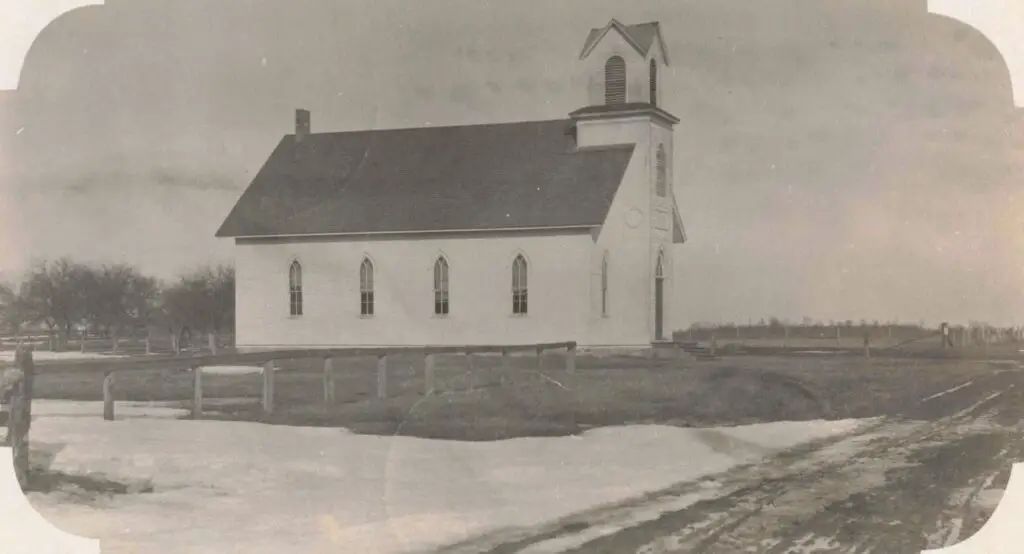
Education was equally important. Gilford’s children initially attended class in small one-room schoolhouses scattered around the township. In fact, the first township meeting in 1858 was held in a primitive log schoolhouse, indicating a school existed even in those pioneer days.
By the early 20th century, a more organized school district had formed. One notable school was the Graham School, a little one-room schoolhouse that appears in old records (and even in the title of a postcard) alongside mentions of Gilford. Students of all ages would learn together under one teacher’s guidance. They studied reading, writing, arithmetic, geography, and civics – basics that prepared many to take over farms or businesses, or to continue to high school in a larger town.
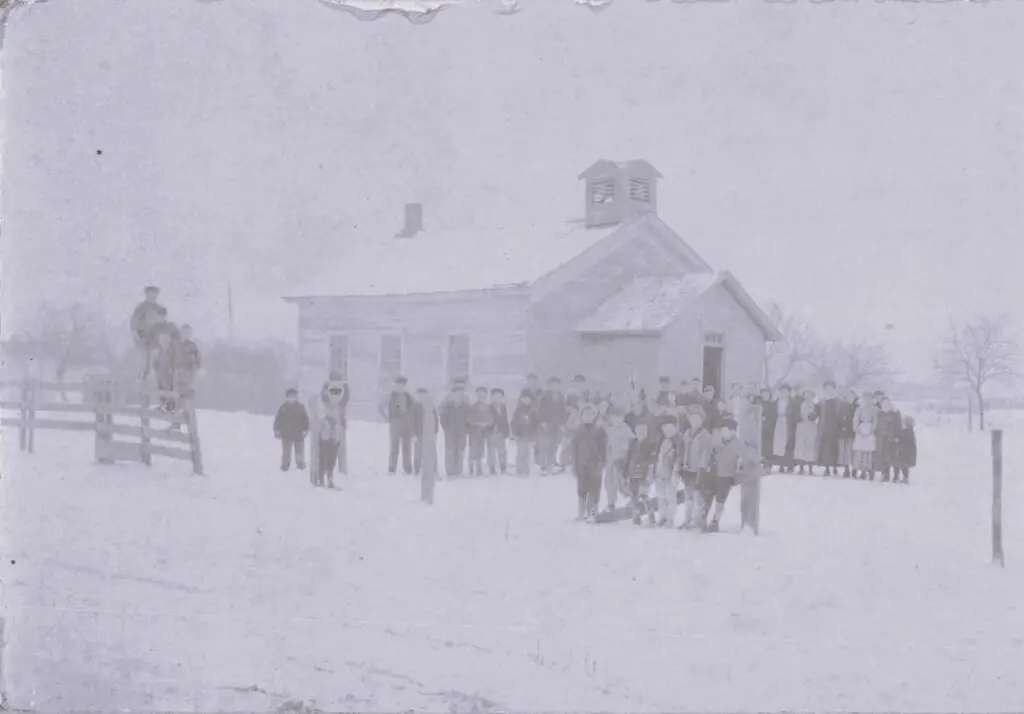
Photographs from around 1910 show proud, scrubbed-faced schoolchildren in their best clothes standing outside their school, likely on the teacher’s signal (sadly, we do not have a specific Gilford school photo in this collection, but it was a common scene across rural Michigan). The school also served as a community center for events like spelling bees, Christmas plays, and meetings. Life in Gilford revolved around faith, family, and farming, and the church and school were where those values were taught and reinforced daily.
Challenges and Changes (1920s–1950s)
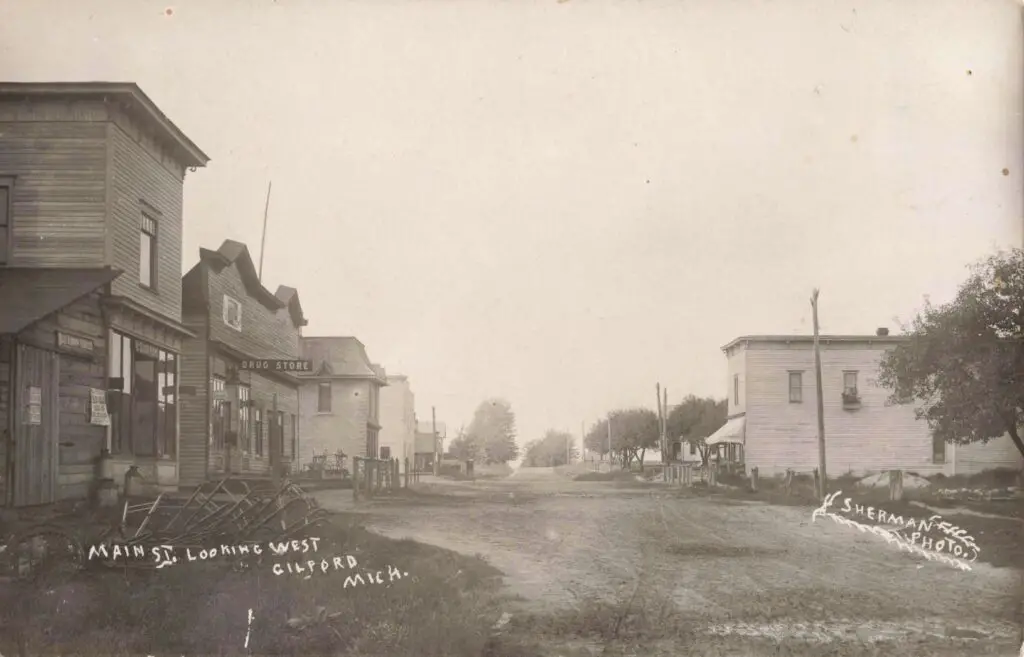
No community stays the same forever, and Gilford faced its share of challenges as the decades passed. The Roaring Twenties and the Great Depression brought economic ups and downs. In the 1920s, as cars became common, Gilford saw its roads improved. The Michigan sugar beet industry was booming then, which benefited farmers in Tuscola County. However, when the Great Depression hit in 1929, crop prices collapsed and rural banks struggled.
Gilford’s own People’s Bank – a small local bank – could not escape the hard times. It eventually closed (possibly during the Depression era), but the building didn’t go unused. It was later repurposed as the Gilford Market and Post Office. This dual-use was typical of resilient small towns: when one institution failed, the community adapted and found new use for the space.
The 1940s brought World War II. Like many American towns, Gilford saw a number of its young men go off to war. Some served in Europe or the Pacific, while those at home contributed by farming for the war effort and rationing crucial supplies. There was likely a service honor roll displayed at the post office or train depot listing the names of local soldiers (many small towns did this). Fortunately, by 1945, the war ended, and those who survived came home to Gilford’s open arms.
The post-war period, however, also hastened changes in rural America. The late 1940s were the beginning of the end for many rural railroads. In 1947, the Pere Marquette Railway formally merged into the Chesapeake & Ohio Railway (C&O). This corporate change, combined with the rise of trucking, meant less rail service to tiny stations like Gilford. By the early 1950s, train service on the old branch line was discontinued. The Gilford depot that had once been so vital was likely dismantled or left to deteriorate after closure. Today, only the memories and photographs remain of that once-busy spot.
With the railroad gone, Gilford’s focus turned entirely to farming and the automobile age. Highways allowed farmers to ship their grain and sugar beets by truck to markets or processing plants. Kids who grew up in Gilford after the war often sought jobs in larger towns or cities, part of a general migration trend that saw rural populations stagnate or drop. The one-room country schools began consolidating in the 1950s. Gilford’s children started attending school in the nearby villages of Fairgrove or Reese (which had larger, centralized schools and eventually high schools). The change was bittersweet – it offered better educational resources, but it also meant the closure of beloved little schoolhouses that had served as community touchstones for decades.
Despite these changes, Gilford did not disappear. Many families stayed on their land, farming into the second half of the 20th century. New technologies like electric lighting (which came to rural Tuscola County by the 1940s through the REA), mechanized tractors, and eventually even computers would find their way into Gilford’s homes and farms. Yet the essential character of the town – close-knit, quiet, and hard-working – remained intact.
Legacy and Reflections
Standing in Gilford today, it’s hard to imagine the lively scenes of the past – but they are there if you look closely. The history of Gilford Michigan lives on in its remaining landmarks and in the stories passed down by its people. The Gilford United Methodist Church, for example, still stands on North Bradleyville Road, over 130 years since its cornerstone was laid. It even received an official state historical marker commemorating its founding and role in the community. The church has been lovingly maintained and continues to be a gathering place, underscoring the continuity from past to present.
Another enduring piece of Gilford’s heritage is agriculture. Drive through the area and you will see the same expansive fields of corn and soybeans that have defined the landscape for generations. A grain elevator in Gilford, now operated by a local cooperative (Star of the West Milling Company), continues to collect the harvests of area farmers. In that sense, one of the town’s original purposes – as a center for storing and shipping farm products – remains unchanged over a hundred years later. During the fall harvest, grain trucks form a line on South Bradleyville Road much like horse-drawn wagons did a century ago.
Gilford may not grab headlines or attract tourists, but its story is profoundly meaningful. From the era of steam locomotives and telegraph clicks to the era of tractors and the internet, Gilford has quietly navigated the tides of history. Its population has always been modest (the township today has around 700 residents), yet the sense of community runs deep. Annual events like township picnics, church centennials, or local historical society gatherings keep the memories alive. In 1989, for instance, the Gilford church celebrated its centennial with former members coming back and even a balloon launch to mark the occasion – a sign of how cherished the town’s history is to those who call it home.
Final Thoughts About the History of Gilford

The history of Gilford Michigan is a tapestry of small moments that together paint a larger picture of resilience and change. It’s in the image of a farmer waving from his wagon to the stationmaster in 1910. It’s in the recollection of children laughing in a one-room schoolyard in 1930. It’s in the quiet pride of a community that, even as times changed, it held on to the values of hard work, faith, and friendship. Gilford, Michigan, may be small, but its history – captured in early 20th-century photos and the hearts of its people – speaks volumes about the American experience in the heartland.
References
University of Michigan Digital Collections. David V. Tinder Collection: Real Photo Postcards – Tuscola County (Gilford). – Includes early 1900s images of Gilford: Main Street in 1912, the Pere Marquette Depot, Dr. Orr’s residence in 1914, and others, which corroborate descriptions of the town’s appearance and key figures.
Thumbwind Publications (2025). Pere Marquette Depot in Gilford, Michigan: A Glimpse into Early Rail Life. Medium – Describes the 1910-era Gilford railroad depot and its role in the community.
Gilford Township (2015). Master Plan. – Contains historical photos and notes that Gilford was a “growing, prospering community” by 1911.
Wikipedia (2023). Gilford Township, Michigan. – Provides founding details (1858 organization, post office dates) and naming origin.
Michigan History Trail (2022). Gilford United Methodist Church. – Historical marker information on the church’s founding in 1887–1889.

